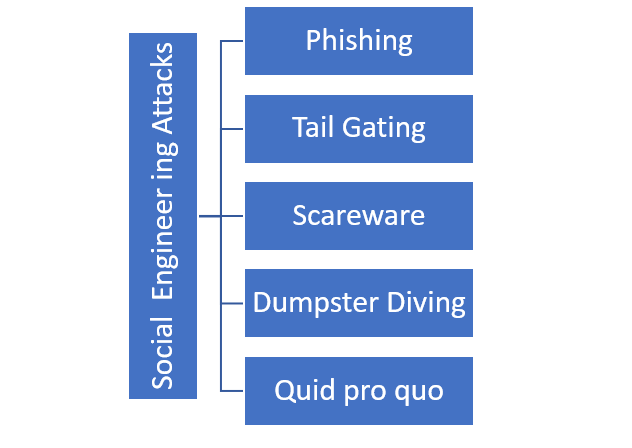IT Networks are targeted by multiple type of threats. It’s not just advanced technology that enables such attacks but also gullible humans who unknowingly aid in it. Such type of attacks is known as Social Engineering. Let’s discuss what is social engineering and how to defend IT networks from it.
Social engineering is a manipulation technique that is used to gain access to confidential information, private networks, and privileged information. The attacks could be executed by extracting information from users through a friendly verbal conversation after establishing trust. The victims hardly suspect any ill-intention while being leveraged to extract information. which helps the attackers get unauthorized access to networks.
Social engineering attacks are planned around the day-to-day habits/routines of the users like their routines in the work environment. Once the attacker decodes what encourages the users’ actions, they can deceive and operate the compromised user effectively for executing the illegal activities, as the user is not aware of the values of personally identifiable data such as email IDs, phone addresses, etc. They can also be lured to click on hyperlinks which would spread malware on their systems.
In most of the attack surfaces, the key medium of the attack is the communication between the Attacker and user. The attacker encourages the user to share the private information of self and/or business to compromise themselves for the attack. The mode of communication between the user and the attacker could be various.
Following are a few steps involved in social engineering attack surface. Threatening the user with personal and emotional triggers like anger, emergency, fear of termination or suspension of mandatory day-to-day services, and tempting the user with free offers and goodies, are some of the situations where the users do not consider the values of sharing personal details such as credit card, debit card, bank account, and personal information. The emotional reaction of the user makes the job of the attacker simpler in compromising the user.

Types of Social Engineering Attacks

- Validating the identity of the user with whom we are doing business, communications
- Checking for the authenticity of the attachments and the email we get in our inbox
- Double-checking the content and legitimacy of the offers and discounts which are sent to us
- Verifying the email address, domain, and social media profiles carefully when we get a message from the suspect
- Ensure the emotions of emergency, excitement and curiousness are not misused to make us compromised
- Avoid sharing sensitive information with any stranger about business or self
- Use of Multifactor authentication adds one extra layer of the security upon verifying the identity of the user. Adaptive authentication plays a key role in safe authentication for handling modern-day attacks as it uses a dynamic way of identifying the user
- Having a strong password policy or password manager will ensure the user passwords are of not compromised easily
- Defining the software access policies
- Using Virtual Private Networks (VPNs) to give you private, encrypted access to the network connection
- Implementing the concepts of the Zero Trust on physical devices and software applications to the users
- Ensuring the physical access to the business premises are meeting the governance and compliance guidelines
- Implementing RBAC & SoD policies in a proactive approach
While Social Engineering attacks are targeted toward individuals, when compromised, it is possible that it will impact IT Networks. Thus, it is mandatory to ensure that individuals are aware of such techniques to prevent themselves from becoming the victim of it. Organizations must ensure that all employees are given awareness trainings and put measure in place to effectively guard against social engineering.

Author
Sundarmoorthy S
Sundar has more than 13 years of experience in IT, IT security, IDAM, PAM, and MDM project, and products. He is interested in developing innovative mobile applications which save time and money. He is also a travel enthusiast.




